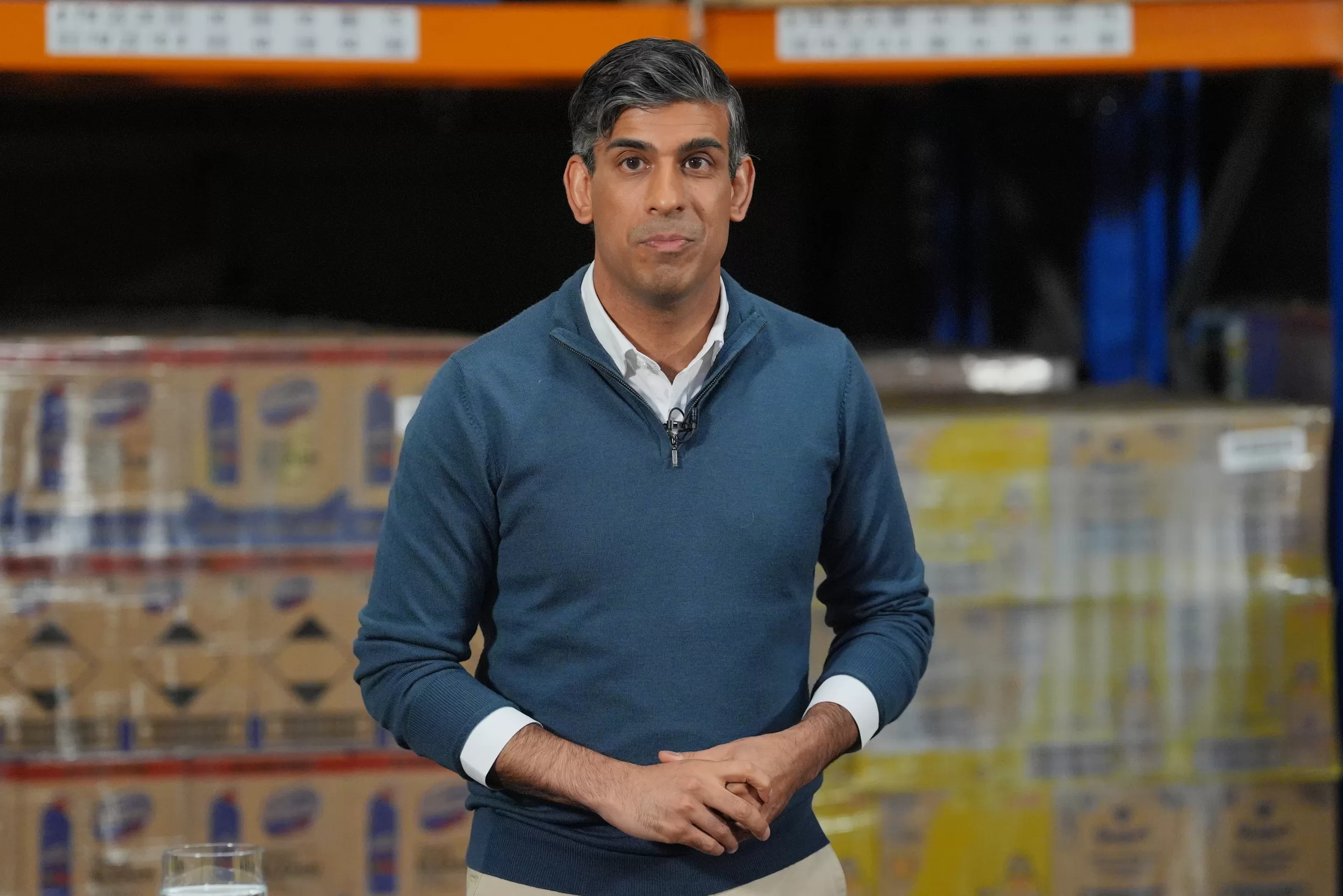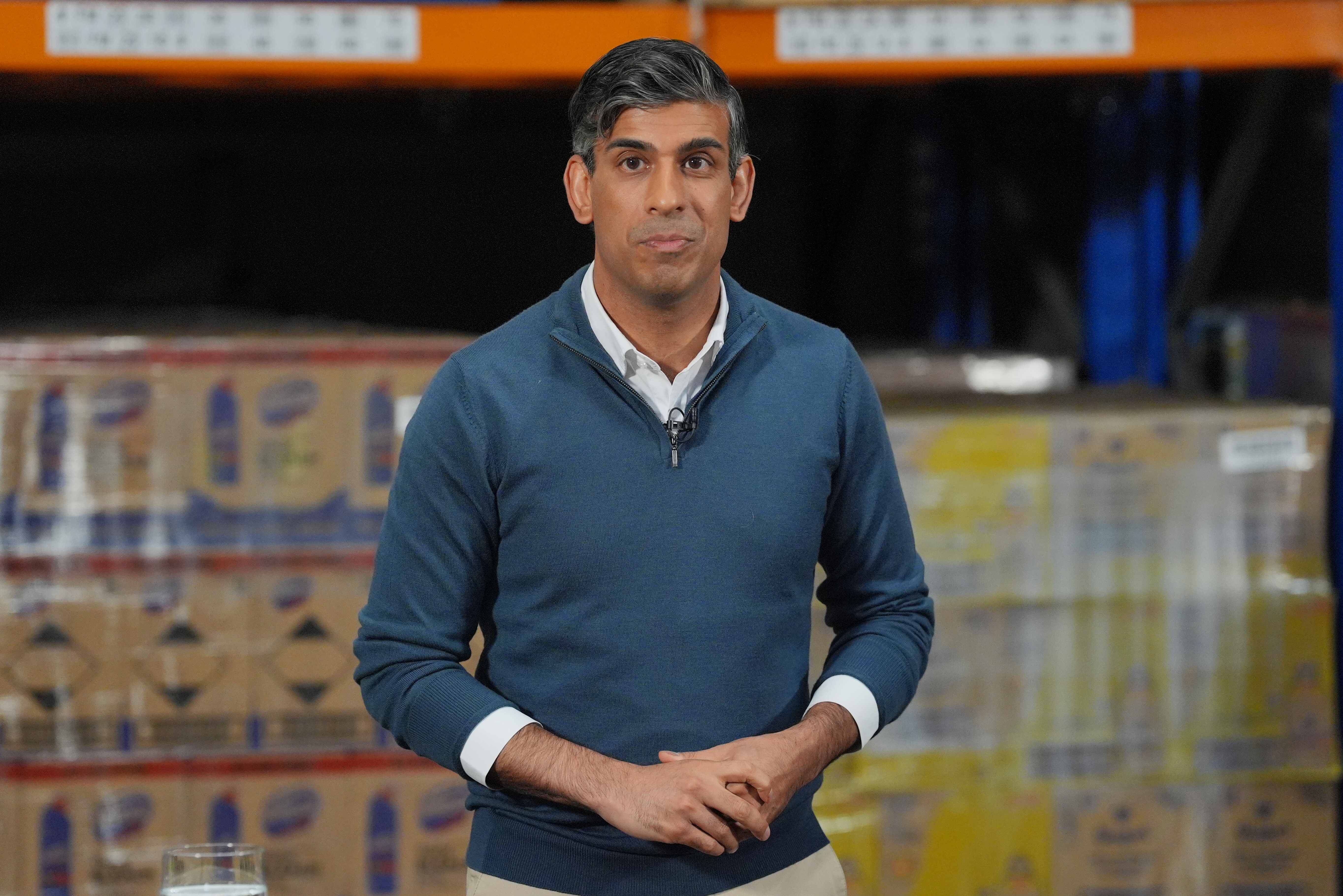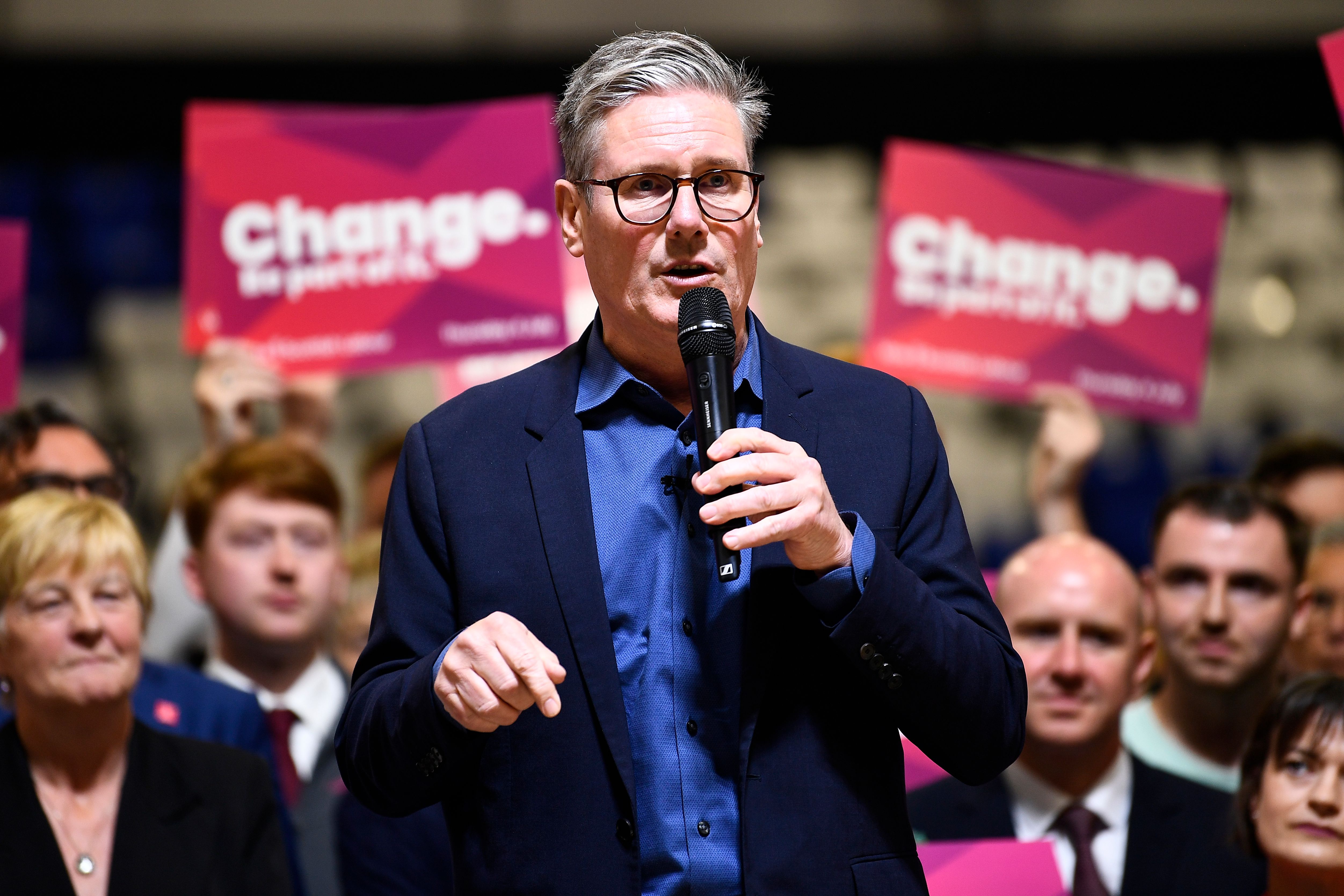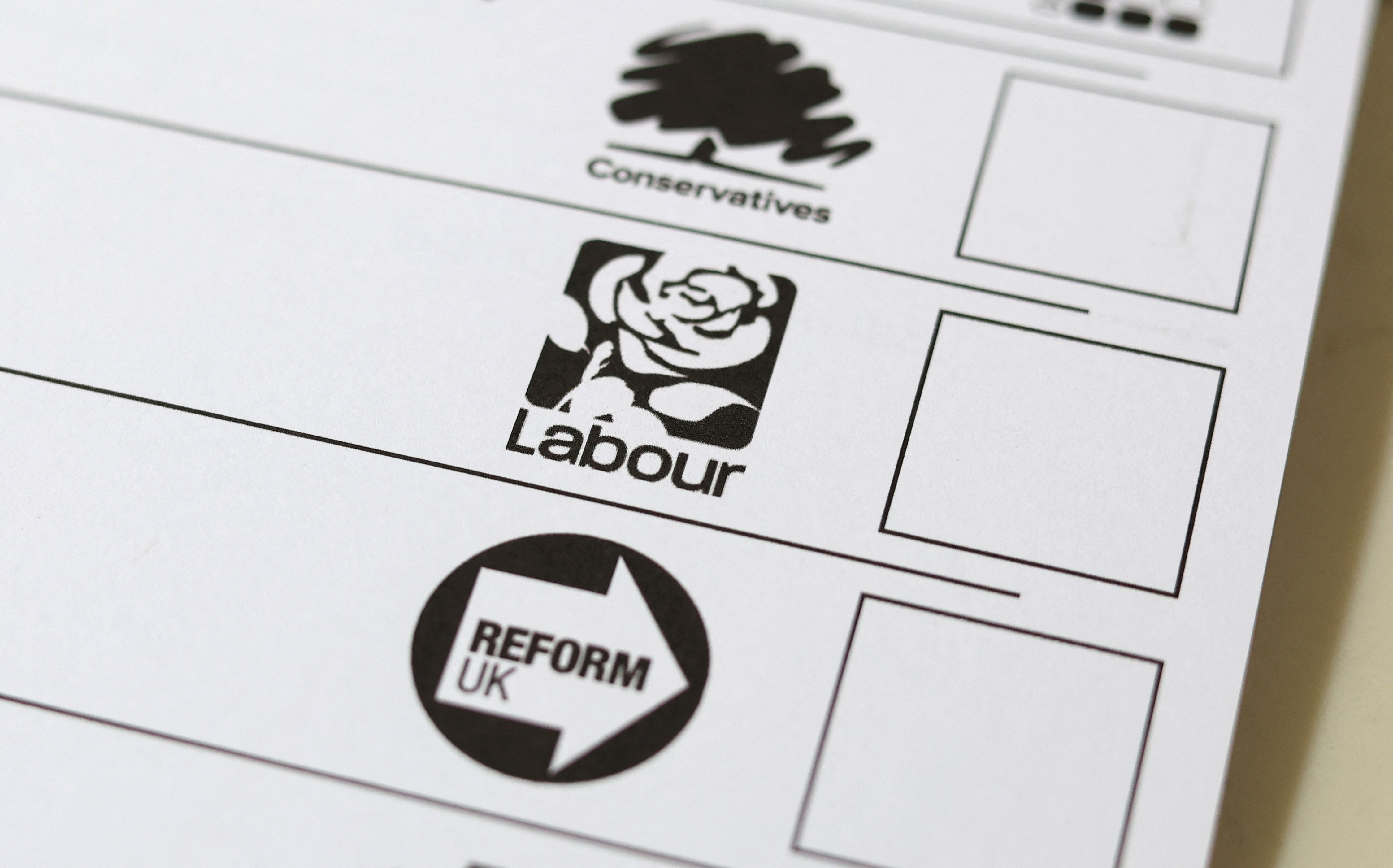Millions of voters will hit the ballot box in an election that is widely expected to return the first Labour majority for almost 20 years.
Sir Keir is projected to thunder into Downing Street with a landslide while the Tories are fighting to avoid a total rout.
Voting opened at 7am and will close at 10pm when the official exit poll will give the first indication of the final results.
You can also watch a live edition of Never Mind The Ballots at 10.15pm on our YouTube channel and thesun.co.uk for snap analysis with Harry Cole and guests.
Politicians and activists from all the main parties will be pounding pavements today reminding their supporters to get out and vote.
Read more about polling day
Watch our election special with Piers Morgan
PIERS Morgan will join our star-studded Never Mind The Ballots panel just moments after the exit poll drops tonight.
Our Political Editor Harry Cole will host the Piers Morgan Uncensored host and a panel of experts at 10.15pm for a snap reaction to the first indication of the election results.
You can watch it live here.
Legendary Sun columnist Piers, who has interviewed Rishi Sunak twice, will give his candid takes on the most important election in a generation.
We’ll be back again at 8am tomorrow to chew over the full results and fallout from the race for No10.
For the very best analysis tune in on The Sun’s YouTube page or thesun.co.uk. You won’t want to miss it.
Mr Sunak will be up in his Yorkshire seat of Richmond and Northallerton, while Sir Keir will cast his vote in his Holborn and St Pancras constituency.
Around a fifth of the electorate are already believed to have voted via post, although disruption at the Royal Mail has meant some people have not received theirs.
The main party leaders will rally their troops one final time today although they are not allowed onto the airwaves because of strict broadcasting rules on Polling Day.
The election could put an end to 14 years of Tory rule after Mr Sunak’s early election gamble failed to revive the party’s fortunes.
Labour’s expected victory is a significant turnaround from five years ago when the party crashed to its worst defeat since 1935 under Jeremy Corbyn.
However, polls have shown Sir Keir’s personal appeal would be among the lowest of any incoming premier.
The final results are likely to show a collapse in Tory support in both the Red Wall seats won by Boris Johnson in 2019, as well as their traditional heartlands in the south.
Mr Sunak has been under further pressure from Nigel Farage’s Reform UK party and Sir Ed Davey’s resurgent Lib Dems.
Last elections: How the Tories gained power
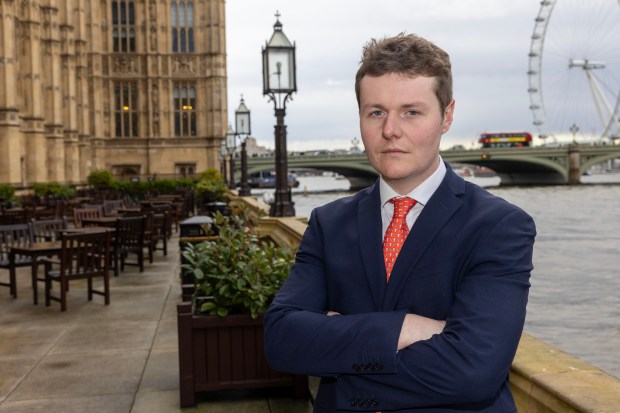
By Jack Elsom, Chief Political Correspondent
2019 – The Brexit election
Boris Johnson called the 2019 general election to break the Commons deadlock over Brexit.
A coalition of Opposition parties and Tory Remainers were blocking his deal from passing and had effectively put the country in limbo.
After purging the Conservatives rebels – and battling Jeremy Corbyn to actually let him trigger the election – the date was set for December 12.
The winter campaign saw Johnson adopt an effective Get Brexit Done slogan while Labour struggled to explain its policy of holding a second referendum.
The result saw the collapse of Labour’s Red Wall fortress of northern seats who switched to back the Tories and helped them win an 80-seat landslide majority.
CON: 365/43.6% LAB: 202/32.1%
2017 – May fluffs it
Theresa May was riding high in the polls in the spring of 2017 when she decided on a walking weekend in Wales to call a snap election.
While commanding a slim majority, she wanted her mandate having inherited No10 from David Cameron after a Tory coronation contest.
But the wheels quickly fell off her presidential-style campaign, resulting in a disastrous press conference where she infamously insisted “nothing has changed!” as her social care policy was ripped to shreds.
It cost her the Tory majority as Jeremy Corbyn performed better than expected, and May was forced to do a confidence and supply deal with the DUP.
CON: 317/42.3% LAB: 262/40%
2015 – Cameron wins majority
David Cameron let his Tory-Lib Dem coalition reach its full five years, resulting in a long 2015 campaign.
He successfully turned on his deputy PM Nick Clegg – blaming them for all the faults of their government and asking voters to help him cut them loose.
It was an effective strategy that saw him clinch a small Tory majority, the first since 1992.
CON: 330/36.1% LAB: 258/29%
2010 – Cameron falls short
After 13 years of New Labour, Gordon Brown was ousted as Prime Minister – but the Tories fell short of an outright majority.
Brown had bottled calling an election in 2007 upon succeeding Blair after letting speculation run and run.
After five days of coalition talks, Cameron forged a deal with Nick Clegg’s Lib Dems.
CON: 306/36.1% LAB: 258/29%
The Tories have been heavily criticised for running one of the most disastrous campaigns in the party’s history.
It included a string of unforced errors including returning early from the D-Day commemorations and the betting scandal.
He did manage to land some blows on tax and immigration during a series of campaign debates.
Sir Keir has run a cautious campaign and unveiled a manifesto of “no surprises” that pledged not to raise the headline rates of national insurance, income tax or VAT.
